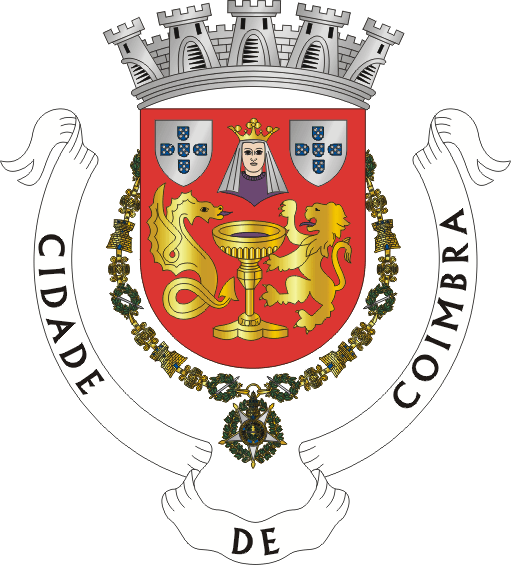Coimbra: Difference between revisions
Knorrepoes (talk | contribs) No edit summary |
Knorrepoes (talk | contribs) m (Text replace - "Arms of Freguesias" to "Freguesias") |
||
| Line 18: | Line 18: | ||
The twin shields on either side of Isabel, in today's Arms, are the ensigns of Afonso Henriques, Portugal's first monarch, who also made Coimbra his capital. | The twin shields on either side of Isabel, in today's Arms, are the ensigns of Afonso Henriques, Portugal's first monarch, who also made Coimbra his capital. | ||
Freguesias in Coimbra : | |||
*[[Botão]] | *[[Botão]] | ||
*[[Brasfemes]] | *[[Brasfemes]] | ||
Revision as of 15:41, 21 December 2010
| Heraldry of the World Civic heraldry of Portugal - Brasões dos municípios portugueses |
COIMBRA
District : Coimbra
Origin/meaning :
For the "lady" in the arms there are two explanations; one states that she is the patron saint of Coimbra, the Sainted Queen Isabel, wife of King Dinis, renowned in Portugal for her miracle of the roses. The second explanation states that she represents an old Suevic princess named Cindazunda. This is related with a legend that occurred during the reconquest of Portugal from the Moors.
The serpent is the symbol of wisdom, and, together with the goblet (the Holy Grail of the Quest) symbolise the city's university. Coimbra prides itself in being one of the oldest Universities in Europe (founded by the Isabel's husband Dom Dinis).
The twin shields on either side of Isabel, in today's Arms, are the ensigns of Afonso Henriques, Portugal's first monarch, who also made Coimbra his capital.
Freguesias in Coimbra :
- Botão
- Brasfemes
- Castelo Viegas
- Eiras (Coimbra)
- Ribeira de Frades
- Santa Clara
- Santo António dos Olivais
- São João do Campo
- São Martinho do Bispo
- Souselas
- Taveiro
- Torres do Mondego
- Trouxemil
Literature : Information provided by Carlos Cordeiro (ccordeiro@coneddev.com) and Branca Gonçalves (second explanation).
